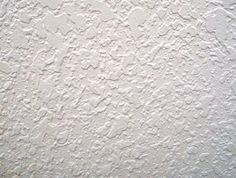For Sponging Walls Does Paint Have To Dry First

Subtractive sponging can be done densely as well - here an oil-based, moss green glaze was lifted off a cream colored wall, using the tips of a grass sea sponge, and rinsing it often to keep the imprints crisp.. The effect of this particular sponge painting technique resembles additive sponging in some ways, with a finish that looks slightly crunchy but without the dotted pattern typical of.
For sponging walls does paint have to dry first. Using a paint roller, base-coat a clean, dry wall with a Jack o' Lantern; let dry. Apply a second coat if needed and allow to dry. Use wide painter's tape to mask around doors, windows, the ceiling, and the floor. Once you have your guideline done, let it dry to check the color of the brick. I didn’t like my red so much at first, so I mixed in a little black to my next session of painting to darken it up just a smidge. I wanted to try to get it to look as much like our exterior brick as possible. Always Let Paint Dry Before Committing Have a pile of clean, dry cloths or lint-free paper towels handy to blot the sponge when it loads up with paint. Between completed sections, rinse the sponge in a bucket to remove glaze, which tends to thicken inside the pores. Carry the plate or bucket of glaze in your other hand, or keep it nearby on a chair or stepladder. Paint the walls in your room with the base paint color of your choice. Flat or eggshell paints are best for most situations, but in rooms that get heavy use or where you expect to wash the walls frequently, satin or semi-gloss paint is a better choice. If necessary for complete coverage, apply a second base coat after the first coat dries.
When it is exhausted, dip the sponge back into the color and continue sponging the whole wall. If you believe the paint looks damaged because of the dirt, then clean out the wall first. Although oil-based paint is stronger, white oil paint does yellow as time passes, altering the color. For example, spray guns offer several spray settings. Sponging, rolling, ragging, and using a paint brush all vary the thickness of the paint too. Consider thickness when deciding whether you will have adequate dry time before the rain pours down. 5. Primer. If your project requires primer, you have two timelines to contemplate. Paint lets you make magic with techniques to simulate a variety of textures on the wall. These theatrical finishes incorporate imperfections as part of their "authentic" charm, or simply render them invisible.Color-washing, an uneven film of two or more shades of paint brushed on and partly wiped off the wall, has a very Old World effect.Stippling, rag rolling, sponging, and painting faux. In sponging, first you have to set off a dry base paint. After that, apply the paint with a sponge. To stamp the wall with sponge, apply a base coat with a brush/roller and let it dry. Dip the sponge in water and wring it out so that the sponge is slightly damp. Pour the second-color paint into a paint tray.
First, you paint the trim. Then, when you paint the walls you're faced with the challenge of bringing the darker paint right up to the edge of the trim. You could mask off the trim with tape , but if you have a steady hand, you can simply "draw" the line of colored paint, freestyle. After applying the first coat, they will let the paint dry before applying the second coat. The surface must also be completely dry before any other designs and final coats are made on the walls. If the work is done outdoors, painters can expect to work under the heat of the sun since paint is typically applied when the weather is good. Choose a paint in a lighter or darker tone than your first sponge paint color. Mix 1 part paint with 4 parts clear latex glaze, and then apply it after the first paint color is dry. If your walls are teal and your first sponge paint color is aqua blue, consider using a sky blue or a navy blue. Latex paint dries fast, so even in a small room you probably won’t have to wait long for one coat to dry before starting the next. Plus: Check out these other interior house painting tips you need to know. What you’ll need. You can pick up everything you’ll need for this project at paint stores and most home centers (Photo 1).
A paint with a satin or semi-gloss finish, rather than eggshell or matte, is recommended, because it gives you a longer working time when applying glaze. Let the base coat dry for at least 24 hours. 2 Wiping off the dust after sanding ensures that the prime coat will not have nubs or dust mixed in with the paint. Vacuum the floor to remove all the dust from the room and wipe down the walls with tack cloth or a damp sponge. A clean, smooth wall gives the best results for the finished coat of paint. The most challenging part of sponging off is moving quickly, in order to maintain the wet edge (dried edges mean you'll have to start over, with the base coat step). Water-based glazes dry too fast, leaving very little open time to remove the glaze. Cover the Damage with Joint Compound. If the surface you are dealing with has a chronic bubbling problem or you are repairing bubbling in fresh paint, using setting-type joint compound, also called mud, for this repair will minimize the chance of the blisters recurring. Ready-mixed compound tends to add too much moisture to the surface and can induce bubbling in the finish.



















